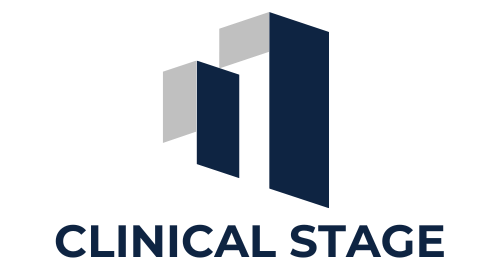Managing Adverse Events in Clinical Trials
Clinical trials are the cornerstone of medical research, providing critical data on the safety and efficacy of new therapies, treatments, and interventions. They play a crucial role in advancing medical knowledge and improving patient care. The process involves a series of steps designed to test a new intervention, such as a drug, device, or therapy, in a controlled environment. This ensures that any findings are robust and reliable, minimizing the risk to participants and maximizing the accuracy of the results.
A fundamental aspect of clinical trials is monitoring for adverse events (AEs), which are any undesirable experiences associated with the use of a medical product in a patient. The significance of AEs lies in their potential to impact both participant safety and the overall success of the trial. Effective management of these events is crucial, as it helps to protect the well-being of participants, ensure the integrity of the trial data, and maintain compliance with regulatory requirements.
Purpose of Managing Adverse Events
Managing adverse events is a multi-faceted process aimed at achieving several key objectives. Firstly, it ensures the safety of participants. By monitoring and responding to AEs promptly, researchers can mitigate potential risks to those involved in the study. This is especially important as clinical trials often involve new, untested treatments that may have unknown side effects.
Secondly, managing AEs is vital for maintaining the integrity of the trial data. Unreported or poorly managed adverse events can skew the results, leading to inaccurate conclusions about the safety and efficacy of the intervention. This, in turn, can have serious implications for future patients and the wider healthcare system.
Lastly, regulatory compliance is a critical aspect of AE management. Regulatory bodies such as the Food and Drug Administration (FDA) and the European Medicines Agency (EMA) have stringent requirements for the reporting and management of adverse events. Failure to comply with these regulations can result in significant penalties, including the suspension of the trial, withdrawal of the drug from the market, or legal action.
Understanding Adverse Events
Definition and Classification
Adverse events are broadly categorized based on their severity and relationship to the treatment being studied. This classification helps researchers and healthcare providers understand the potential risks associated with a particular intervention and develop appropriate mitigation strategies.
Adverse Events (AEs) refer to any undesirable experiences that occur in participants during a clinical trial. These can range from mild symptoms, such as headaches or nausea, to more severe conditions, such as organ failure or death. AEs can be related to the treatment, the disease under study, or other unrelated factors.
Serious Adverse Events (SAEs) are a subset of AEs that are life-threatening, require hospitalization, or result in significant disability or incapacity. SAEs are of particular concern because they can indicate a significant risk associated with the treatment and may necessitate the modification or cessation of the trial.
Adverse Drug Reactions (ADRs) specifically refer to AEs that are directly related to the use of a drug. These reactions can be expected or unexpected based on the known pharmacological properties of the drug. Unexpected Adverse Events are those not anticipated based on the known risks of the treatment and can pose significant challenges for researchers in determining the appropriate response.
Causes and Types of Adverse Events
Understanding the causes and types of adverse events is crucial for effective management. AEs can arise from various sources, including the drug or intervention itself, the procedures used in the trial, the underlying disease, or other external factors.
Drug-related adverse events are those directly caused by the pharmacological action of the treatment. These can include side effects like dizziness, allergic reactions, or more severe outcomes such as organ toxicity. Procedure-related adverse events occur due to the methods or techniques used during the trial, such as surgical complications or issues related to the administration of the drug.
Disease-related adverse events are complications arising from the underlying condition being treated. For instance, a participant with a chronic illness may experience worsening symptoms due to the natural progression of the disease, unrelated to the treatment. Other external factors, such as environmental conditions or interactions with other medications, can also contribute to adverse events.
Reporting Requirements
Accurate and timely reporting of adverse events is a legal and ethical requirement in clinical trials. Regulatory guidelines, such as those from the FDA and EMA, provide detailed instructions on how to report AEs. These guidelines outline the necessary timelines for reporting, which vary depending on the severity and nature of the event. For example, SAEs often require immediate reporting, while less severe AEs may be reported in periodic updates.
Documentation standards are also critical, as they ensure consistency and completeness in the reporting process. All relevant details about the adverse event, including the nature of the event, its severity, duration, and relationship to the treatment, must be recorded. This information is essential for assessing the safety profile of the intervention and making informed decisions about its future use.
Best Practices for Monitoring Adverse Events
Pre-Trial Planning
Effective monitoring of adverse events begins with thorough pre-trial planning. This phase involves conducting a comprehensive risk assessment to identify potential safety issues that may arise during the trial. Based on this assessment, researchers can develop a risk management plan outlining strategies for mitigating identified risks.
The development of the trial protocol is another critical component of pre-trial planning. The protocol should include detailed procedures for identifying, assessing, and managing adverse events. This includes defining criteria for classifying the severity of AEs, establishing timelines for reporting, and outlining the responsibilities of study staff in AE management.
Training of study staff is also essential to ensure that all personnel involved in the trial are knowledgeable about the procedures for identifying and reporting adverse events. This training should cover the types of AEs that may occur, the methods for assessing their severity, and the appropriate steps for reporting them. Regular refresher training can help maintain high standards of safety monitoring throughout the trial.
Continuous Monitoring During the Trial
Once the trial is underway, continuous monitoring of adverse events is critical to ensure participant safety and data integrity. Regular safety assessments and evaluations are conducted to detect any adverse events that may occur. These assessments involve reviewing participant data, such as laboratory results and clinical observations, to identify any potential safety concerns.
Data Monitoring Committees (DMCs) or Safety Review Boards (SRBs) play a vital role in overseeing the safety of participants. These independent groups of experts regularly review the data collected during the trial to assess the safety and efficacy of the intervention. They can recommend modifications to the trial protocol or even halt the trial if significant safety concerns arise.
The use of Electronic Data Capture (EDC) systems has become increasingly common in clinical trials, providing real-time monitoring of adverse events. EDC systems allow for the rapid collection and analysis of data, enabling researchers to quickly identify and respond to safety issues. This technology also facilitates accurate and complete documentation of AEs, supporting regulatory compliance and data integrity.
Post-Trial Follow-up
Monitoring for adverse events does not end with the completion of the trial. Post-trial follow-up is essential to identify any long-term or late-onset adverse events that may not have been apparent during the trial. This follow-up period can vary in length depending on the nature of the intervention and the potential risks involved.
Communication with participants about AE findings is also an important aspect of post-trial follow-up. Participants should be informed about any adverse events that occurred during the trial and any potential long-term risks associated with the intervention. This information is crucial for ensuring transparency and maintaining the trust of participants.
Notable Labs: Pioneering the Management of Adverse Events in Clinical Trials
Clinical trials serve as the backbone of medical research, offering vital data on the safety and efficacy of new treatments, therapies, and medical interventions. They are instrumental in advancing medical knowledge and enhancing patient care by rigorously testing new interventions in controlled environments. This process is crucial for ensuring that findings are reliable and accurate, thereby minimizing risks to participants.
A central aspect of clinical trials is the monitoring of adverse events (AEs), which are undesirable experiences associated with a medical product's use. The importance of AEs lies in their potential impact on both participant safety and the trial's success. Effective management of these events is essential to protect participants' well-being, ensure the integrity of trial data, and maintain compliance with regulatory standards.
Managing adverse events is a comprehensive process with several key objectives. Firstly, it is crucial for participant safety. By promptly identifying and addressing AEs, researchers can mitigate risks associated with untested treatments, which may have unknown side effects. Secondly, proper AE management is vital for maintaining the integrity of trial data, as unreported or poorly managed AEs can lead to inaccurate conclusions about a treatment's safety and efficacy. Lastly, regulatory compliance is a critical aspect of AE management, with strict guidelines from bodies like the FDA and EMA governing the reporting and handling of adverse events.
Understanding and classifying adverse events is foundational to their management. Adverse Events (AEs) encompass a range of experiences, from mild symptoms to severe conditions such as organ failure. Serious Adverse Events (SAEs) are life-threatening or require hospitalization, indicating significant risk. Adverse Drug Reactions (ADRs) are specific to drug-related events, and unexpected adverse events are those not anticipated based on known risks.
The causes of AEs can be varied, including drug-related, procedure-related, and disease-related events, as well as external factors like environmental conditions or medication interactions. Accurate and timely reporting of these events, as mandated by regulatory guidelines, is essential for maintaining the safety profile of the intervention and making informed decisions.
Effective monitoring of AEs starts with thorough pre-trial planning, including risk assessments, protocol development, and staff training. Continuous monitoring during the trial, supported by technologies like Electronic Data Capture (EDC) systems, ensures real-time data analysis and rapid response to safety issues. Post-trial follow-up is also crucial for identifying long-term or late-onset AEs, ensuring comprehensive understanding and management of any risks.
In the event of an AE, immediate response measures are critical, including initial assessment, medical intervention, and notification of relevant parties. Detailed investigation and root cause analysis follow to determine the event's relationship to the treatment and to identify any risk factors. Effective communication and documentation are also essential, ensuring transparency and compliance with regulatory requirements.
Preventive measures and protocol modifications, based on investigation findings, are vital for reducing the risk of future AEs. This includes refining trial protocols, implementing additional safety measures, and providing targeted training and education for staff and participants.
Regulatory and ethical considerations are integral to AE management. Compliance with guidelines, such as the ICH Good Clinical Practice (GCP), ensures the ethical and consistent conduct of trials. Ethical considerations, including informed consent and transparency with participants, are crucial for maintaining trust and ensuring that participants are fully informed about the risks and benefits of the trial.
The management of adverse events is a critical aspect of clinical trials, ensuring participant safety, data integrity, and regulatory compliance. Continuous improvements in safety monitoring practices, supported by emerging technologies, are essential for advancing clinical research and ensuring the highest standards of care.
At Notable Labs, we are dedicated to pioneering robust AE management strategies and fostering a culture of transparency and communication in clinical research. Our commitment to proactive safety monitoring ensures that clinical trials are conducted ethically and safely, leading to better outcomes for patients and the broader healthcare system.
Management and Mitigation Strategies
Immediate Response to Adverse Events
When an adverse event occurs, an immediate response is essential to ensure the safety of the participant and maintain the integrity of the trial. The initial assessment involves classifying the severity of the event and determining its potential impact on the participant and the trial. This assessment is critical for deciding the appropriate course of action, such as providing medical intervention or adjusting the treatment protocol.
Immediate medical intervention may be necessary if the adverse event poses a significant risk to the participant. This could involve providing supportive care, adjusting the dosage of the treatment, or discontinuing the treatment altogether. In some cases, hospitalization may be required to manage the event and prevent further complications.
Notification of relevant parties, including investigators, sponsors, and regulatory bodies, is a crucial step in the immediate response process. Prompt reporting ensures that all stakeholders are aware of the event and can take appropriate actions to address any safety concerns. It also ensures compliance with regulatory requirements for timely reporting of adverse events.
Investigation and Root Cause Analysis
Following the initial response, a detailed investigation is conducted to understand the underlying cause of the adverse event. This process involves gathering all relevant data, including medical history, treatment details, and any other potential contributing factors. The goal is to determine whether the event was related to the intervention and, if so, to identify the specific mechanisms involved.
Determining causality is a critical aspect of the investigation. This involves assessing the likelihood that the treatment caused the adverse event, considering factors such as the timing of the event, the participant's medical history, and the known side effects of the treatment. Establishing causality helps researchers understand the risks associated with the intervention and make informed decisions about its future use.
Identifying potential risk factors is another important outcome of the investigation. This information can be used to modify the trial protocol, implement preventive measures, and provide targeted education and training for study staff and participants. By addressing these risk factors, researchers can reduce the likelihood of similar events occurring in the future.
Communication and Documentation
Effective communication and documentation are essential components of adverse event management. Reporting adverse events to regulatory authorities is a legal requirement, and failure to comply can result in significant penalties. Accurate and complete documentation ensures that all relevant details about the event are recorded, supporting regulatory compliance and providing a valuable resource for future research.
Informing participants and stakeholders about adverse events is also important for maintaining transparency and trust. Participants have the right to know about any safety concerns that arise during the trial, and clear communication helps ensure that they are fully informed about the risks and benefits of participation. Stakeholders, including sponsors and regulatory bodies, need accurate and timely information to make informed decisions about the trial and the intervention.
Documentation and record-keeping best practices are essential for ensuring the accuracy and completeness of AE reports. This includes maintaining detailed records of all adverse events, including the nature of the event, the severity, the treatment provided, and the outcome. These records should be securely stored and easily accessible for review by regulatory authorities and other stakeholders.
Preventive Measures and Protocol Modifications
Based on the findings of the investigation, researchers may need to revise the study protocol to address the identified risks. This could involve changing the dosage of the treatment, modifying the inclusion and exclusion criteria for participants, or implementing additional safety monitoring procedures. These changes are aimed at reducing the risk of adverse events and ensuring the safety of participants.
Implementing preventive measures in ongoing and future trials is also crucial for minimizing the risk of adverse events. This could include providing additional training for study staff, enhancing safety monitoring procedures, or conducting more thorough pre-trial risk assessments. By proactively addressing potential risks, researchers can improve the safety and efficacy of clinical trials.
Training and education for study staff and participants are essential for ensuring that everyone involved in the trial is knowledgeable about the procedures for identifying and managing adverse events. This training should cover the types of AEs that may occur, the methods for assessing their severity, and the appropriate steps for reporting them. Regular refresher training can help maintain high standards of safety monitoring throughout the trial.
Regulatory and Ethical Considerations
Compliance with Regulatory Requirements
Compliance with regulatory requirements is a critical aspect of adverse event management. Regulatory bodies, such as the FDA and EMA, have established guidelines and regulations for the reporting and management of adverse events. These regulations are designed to ensure the safety of participants and the integrity of the trial data.
Key regulations and guidelines, such as the International Conference on Harmonisation (ICH) Good Clinical Practice (GCP) guidelines, provide a framework for conducting clinical trials in a consistent and ethical manner. These guidelines cover all aspects of trial conduct, including the identification and management of adverse events.
Regulatory audits and inspections are conducted to ensure compliance with these guidelines and regulations. These audits involve reviewing the trial documentation, including AE reports, to ensure that the trial is being conducted in accordance with the applicable regulations. Non-compliance can result in significant penalties, including the suspension of the trial or legal action.
Ethical Considerations
Ethical considerations are also a critical aspect of adverse event management. Informed consent is a fundamental ethical requirement in clinical trials, ensuring that participants are fully informed about the risks and benefits of the trial before agreeing to participate. This includes providing information about the potential for adverse events and the procedures for managing them.
Balancing risks and benefits is another important ethical consideration. Researchers must carefully assess the potential risks and benefits of the intervention and ensure that the risks are minimized to the greatest extent possible. This includes implementing robust safety monitoring procedures and promptly addressing any safety concerns that arise during the trial.
Transparency and communication with participants are also essential for maintaining trust and ensuring ethical conduct. Participants have the right to know about any safety concerns that arise during the trial and to be informed about the steps being taken to address these concerns. Clear and transparent communication helps ensure that participants are fully informed and able to make informed decisions about their participation.
Summary of Key Points
Managing adverse events in clinical trials is a critical aspect of ensuring participant safety and maintaining the integrity of the trial data. It involves a multi-faceted approach, including pre-trial planning, continuous monitoring during the trial, and post-trial follow-up. Effective AE management helps to protect the well-being of participants, ensure the validity of the trial results, and maintain compliance with regulatory requirements.
The role of thorough monitoring and effective response strategies cannot be overstated. By identifying and responding to adverse events promptly, researchers can mitigate potential risks and ensure the safety of participants. This includes conducting detailed investigations, determining causality, and implementing preventive measures to reduce the likelihood of similar events occurring in the future.
Future Directions and Trends
Emerging technologies and methodologies are continually improving the way adverse events are managed in clinical trials. Advances in electronic data capture (EDC) systems and data analytics are providing researchers with new tools for real-time monitoring and analysis of adverse events. These technologies are helping to improve the accuracy and timeliness of AE reporting, supporting better decision-making and regulatory compliance.
Continuous improvement in safety monitoring practices is also a key focus for the future. This includes developing more robust risk assessment and management strategies, enhancing training and education for study staff, and implementing more rigorous safety monitoring procedures. By continuously improving these practices, researchers can help to ensure the safety of participants and the integrity of the trial data.
In conclusion, the importance of proactive AE management cannot be overstated. Researchers, study staff, and participants all have a role to play in ensuring the safety and integrity of clinical trials. Ongoing training and education are essential for maintaining high standards of safety monitoring and ensuring that all involved are knowledgeable about the procedures for identifying and managing adverse events.
Participants and stakeholders must also be fully informed about the risks and benefits of the trial and any safety concerns that arise during the trial. By fostering a culture of transparency and communication, researchers can help to build trust and ensure that participants are fully informed and able to make informed decisions about their participation.
In the ever-evolving field of clinical research, the safety and well-being of participants must always be the top priority. By implementing robust AE management strategies and continuously improving safety monitoring practices, researchers can help to ensure that clinical trials are conducted safely and ethically, ultimately leading to better outcomes for patients and the wider healthcare system.










